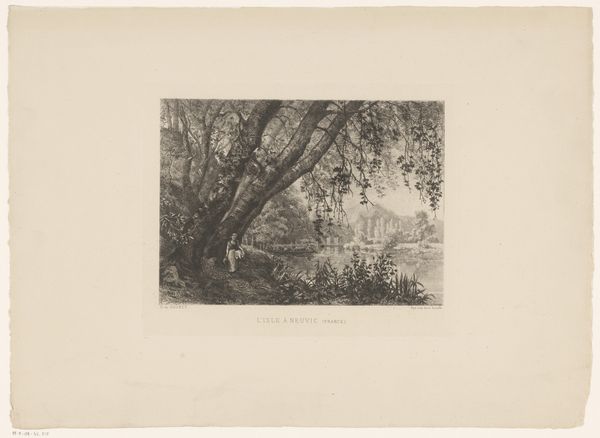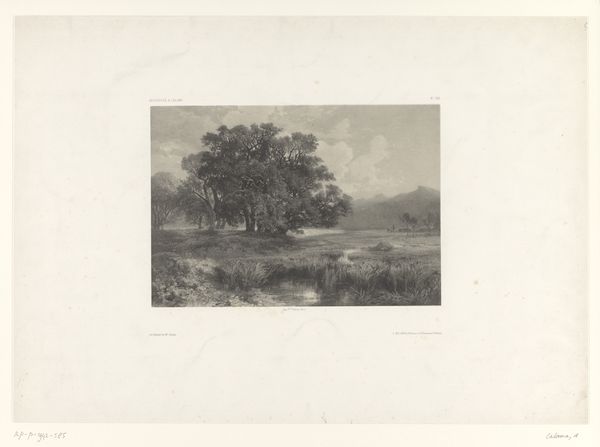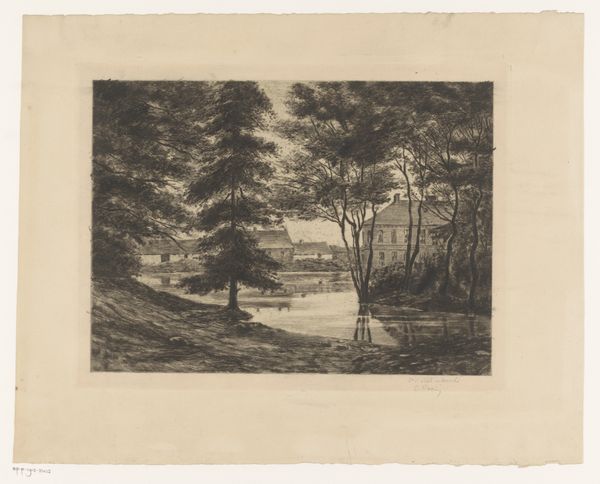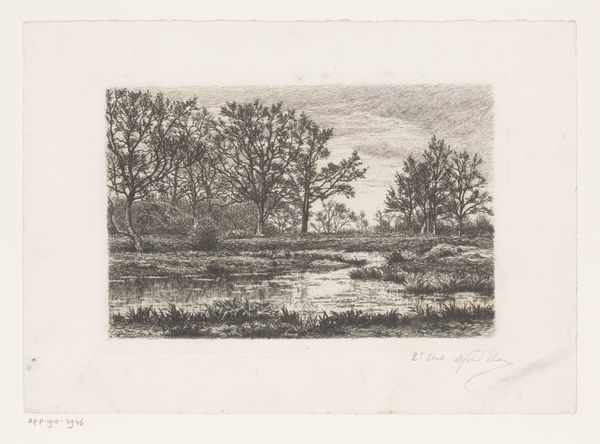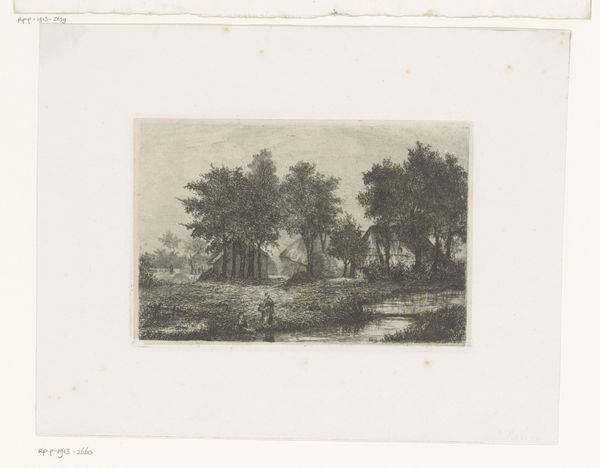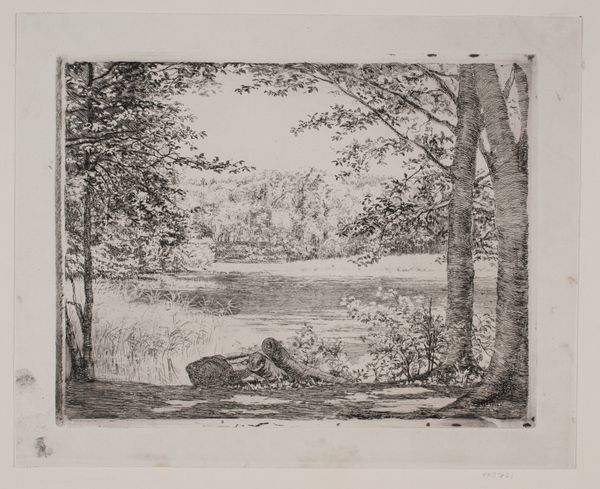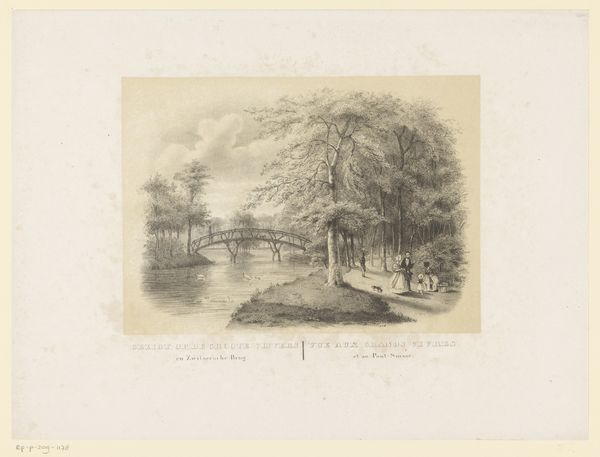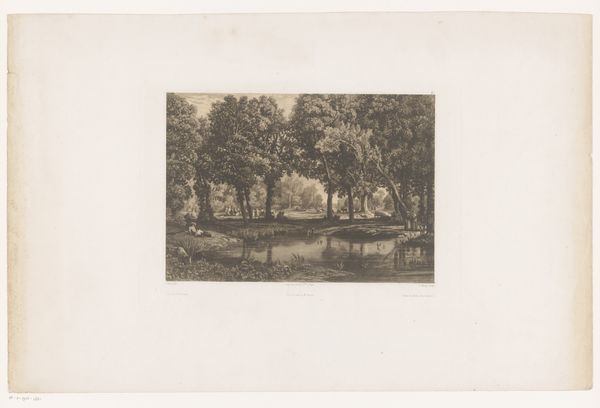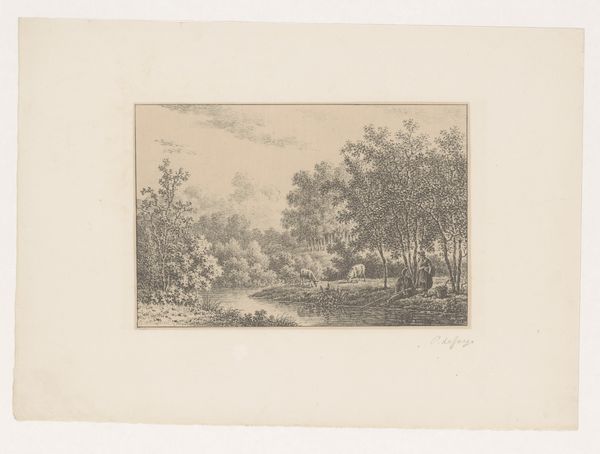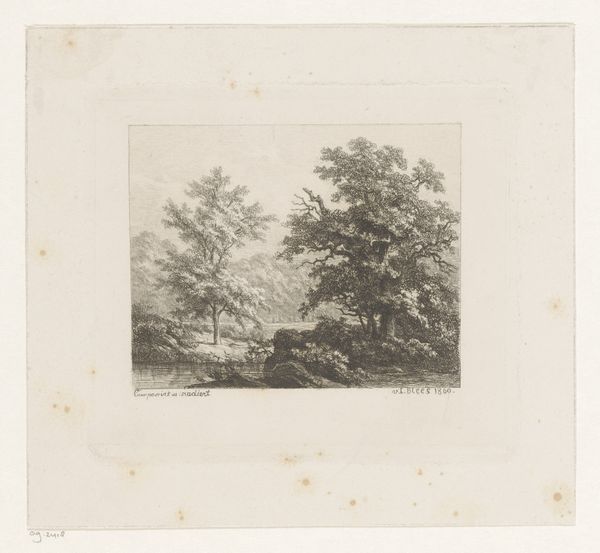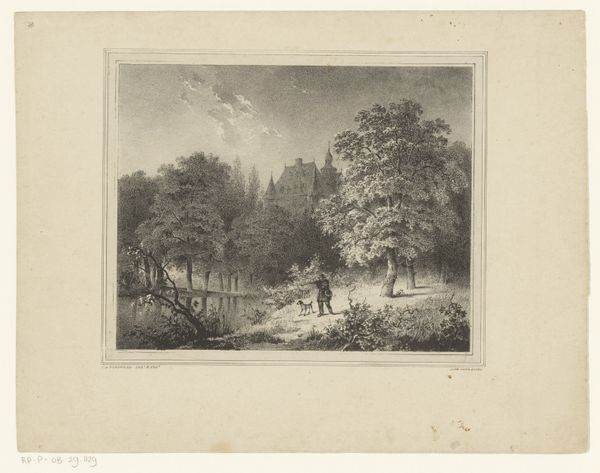
print, etching
# print
#
etching
#
landscape
#
line
#
realism
Dimensions: height 133 mm, width 149 mm
Copyright: Rijks Museum: Open Domain
Curator: Ah, "Gezicht op de brug bij Suresnes," or "View of the Bridge at Suresnes." Jules Haro created this etching in 1881. The medium captures the delicate lines and tonal nuances of the scene, a very specific place that now lies to the west of Paris. Editor: My immediate impression is tranquility. Despite the precise linework, it exudes a soft, almost dreamlike quality. It's the quintessential image of the peaceful French countryside in the late 19th century. I feel almost invited to take a deep breath in the middle of the chaos. Curator: Notice how Haro, along with the engraver Amédée Mathey, positioned the strong central tree, partially submerged at its base, as if grounding the scene. Trees possess many diverse and culturally-specific meanings but, across time and place, they represent connection, growth and longevity. This creates an anchor for what we imagine is an idyllic view. Editor: Precisely. The image clearly seeks to depict a sense of place – as if offering some refuge from the rise of modernity and industry elsewhere in France. It reminds viewers of pre-industrial innocence, but one wonders whether it could have survived industrial expansion nearby. How does Haro manage his political positioning with this work? Curator: The choice of etching as a medium is telling. While photography rapidly advanced, offering seemingly objective representations of the world, Haro opted for a traditional method rooted in artistic interpretation. He also invites participation into his world, using a signature that connects his and Amédée's name as if to claim authority for that position. It's not just a literal depiction but a carefully constructed visual narrative, designed to promote that image. Editor: Good point. Also consider the bridge itself in the background – a technological achievement. Is it a symbol of progress, subtly undermining the tree and rural view, or simply part of the evolving landscape? Does this suggest how landscape adapts to changing cultures in order to be preserved and integrated in new cultures of the era? Curator: Perhaps Haro suggests that even in the face of progress, natural beauty persists, retaining our cultural memories of it. It certainly lends a peaceful quality. Thank you for noticing that point, because otherwise I never would. Editor: My pleasure. It has made me see and notice certain signs and cultural markers about both nature and how humans work in cooperation and against nature for control.
Comments
No comments
Be the first to comment and join the conversation on the ultimate creative platform.
